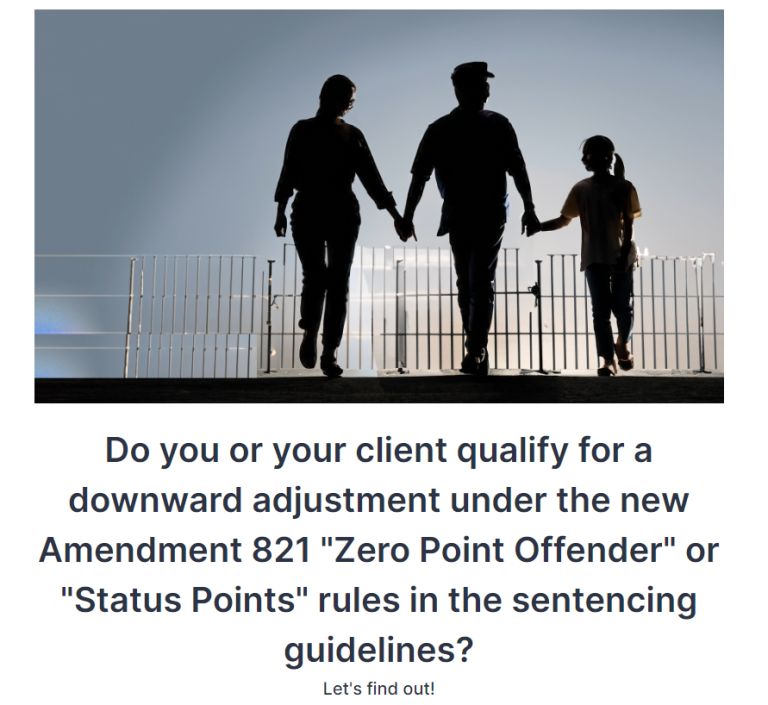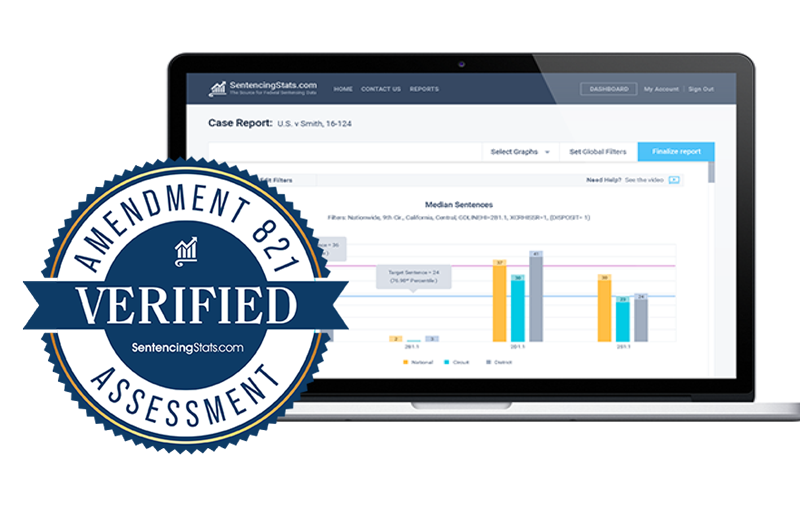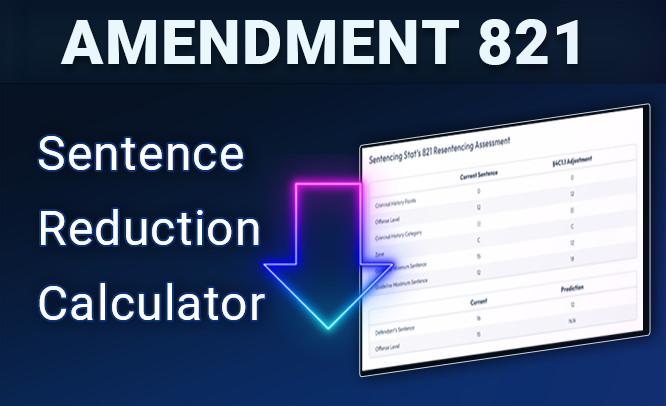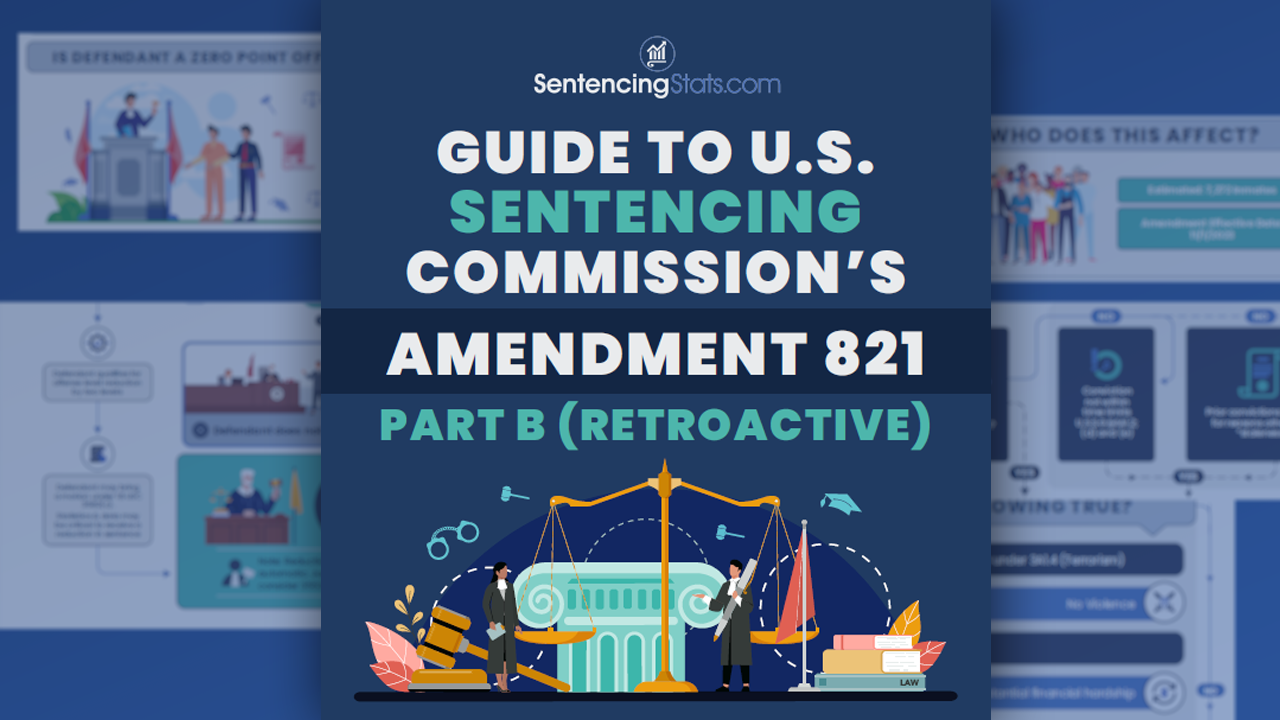Sentencing Stats official Guide to U.S. Sentencing Commission's Amendment 821, §4A1.1 Part B (retroactive), otherwise known as the Zero Point Offender reduction:
-
-
Who Does this Affect? The U.S.S.C. estimates Part B will affect approximately 7,272 Federal Inmates.
-
Amendment Effective Date: 11/1/2023
-
How does a defendant qualify for the Zero Point Offender reduction under Amendment 821 Part B?
This guide was created to make it easy to understand and help attorneys, public defenders and loved ones of inmates understand the process:
-
How to Determine Amendment 821 Part B Qualification
- Does the defendant have zero prior convictions?
- If no, was the conviction outside the time limits of USSG 4A1.2 (d) and (d) OR the prior conviction ignored for reasons other than “staleness”?
- Are all of the following true?
- Sentence did not include adjustment under 3A1.4 (Terrorism)
- No Violence
- Not a sex offense
- No death or serious bodily injury
- Defendant did not cause substantial financial hardship
- No firearms or dangerous weapon used
- Offense not covered by §2H1.1 (offenses Involving Individual
Rights) - No hate crime or human rights offense
- No firearms or dangerous weapon used
- Defendant did not receive adjustment under §3B1.1
(Aggravating Role) AND Defendant was not engaged in a continuing criminal enterprise as defined in 21 U.S.C. § 848.
- If all above are true, has defendant been sentenced AND currently incarcerated?
- Did defendant receive a downward departure or variance at sentencing?
- If yes, is the original sentence imposed lower than the new range? In that case, the defendant will not qualify for the reduction.
- Upon qualification, defendant may file a motion for re-sentencing pursuant to 18 USC 3582(c). Statistics and data may be helpful for convincing court to award adjustment. Judge rules “on the papers”. Note: reduction is not automatic. Judge must consider 3553(a) factors.
Please Note:
- There may be additional mitigating factors such as mandatory minimums which may disqualify a defendant.
- The Commission projects average sentence reduction of 17.6%. Average sentence may drop from 85 months to 70 months.
- It is essential to contact an attorney or public defender to discuss legal issues specific to your case.
NO NEED TO WAIT until 2/1/2024 to request a reduction in sentence under Amendment 821. Avoid the rush by applying early if you qualify.
Share and Download
We created this infographic to help people understand Amendment 821 reductions. Feel free to send a link to this page, post on social or download a free pdf copy of this graphic to share with anyone who may benefit.
Next Steps
We offer a free pre-qualification data-driven form to determine if a defendant might be eligible.

Verified Assessment

We offer an Amendment 821 Data Assessment for $89. If you choose to get a verified data assessment, one of our sentencing data professionals will confirm you have the correct data points to assess whether you qualify. Our team will then review the details of your case and enter your data into our automated system to see if defendant will likely qualify based on the rules. The system will also determine what the amended sentence range will likely be. Currently verified data assessments take up to a week, although we do foresee a backlog so it’s advisable to seek a verification sooner than later.
Note: this is not a replacement for legal representation and if you are unrepresented, it’s critical you seek legal representations.

Would you like to know how much a judge can reduce a qualified defendant’s sentence, under an Amendment 821 motion? Our Amendment 821 Resentencing Reduction Calculator will give you the answer in seconds.
The information provided on this website does not, and is not intended to, constitute legal advice; instead, all information, content, and materials available on this site are for general informational purposes only. Information on this website may not constitute the most up-to-date legal or other information. This website contains links to other third-party websites. Such links are only for the convenience of the reader, user or browser; SentencingStats.com, Inc. does not recommend or endorse the contents of the third-party sites.
Readers of this website should contact their attorney to obtain advice with respect to any particular legal matter. No reader, user, or browser of this site should act or refrain from acting on the basis of information on this site without first seeking legal advice from counsel in the relevant jurisdiction. Only your individual attorney can provide assurances that the information contained herein – and your interpretation of it – is applicable or appropriate to your particular situation.
All liability with respect to actions taken or not taken based on the contents of this site are hereby expressly disclaimed. The content on this posting is provided “as is;” no representations are made that the content is error-free.


